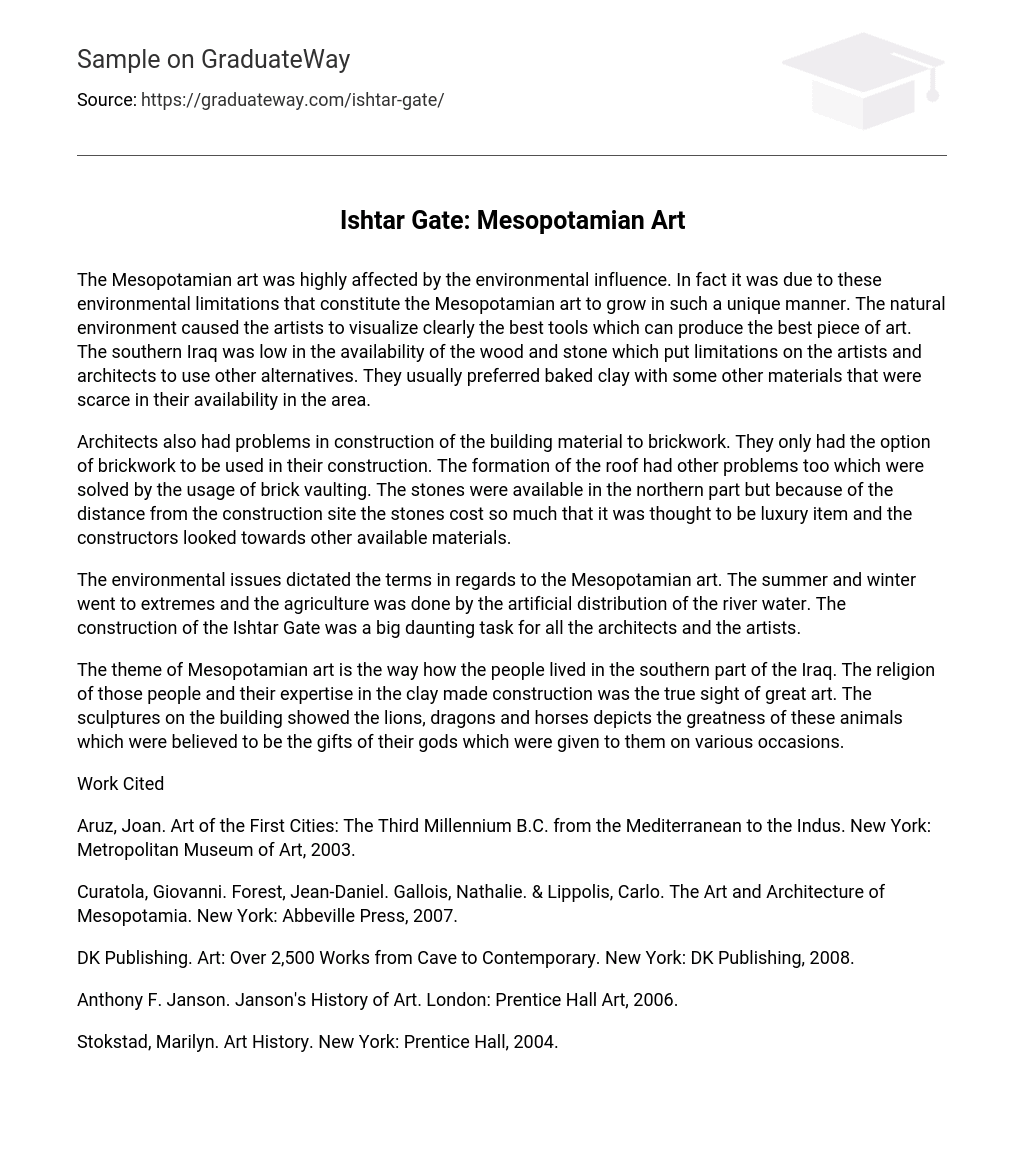The Mesopotamian art was highly affected by the environmental influence. In fact it was due to these environmental limitations that constitute the Mesopotamian art to grow in such a unique manner. The natural environment caused the artists to visualize clearly the best tools which can produce the best piece of art. The southern Iraq was low in the availability of the wood and stone which put limitations on the artists and architects to use other alternatives. They usually preferred baked clay with some other materials that were scarce in their availability in the area.
Architects also had problems in construction of the building material to brickwork. They only had the option of brickwork to be used in their construction. The formation of the roof had other problems too which were solved by the usage of brick vaulting. The stones were available in the northern part but because of the distance from the construction site the stones cost so much that it was thought to be luxury item and the constructors looked towards other available materials.
The environmental issues dictated the terms in regards to the Mesopotamian art. The summer and winter went to extremes and the agriculture was done by the artificial distribution of the river water. The construction of the Ishtar Gate was a big daunting task for all the architects and the artists.
The theme of Mesopotamian art is the way how the people lived in the southern part of the Iraq. The religion of those people and their expertise in the clay made construction was the true sight of great art. The sculptures on the building showed the lions, dragons and horses depicts the greatness of these animals which were believed to be the gifts of their gods which were given to them on various occasions.
Work Cited
Aruz, Joan. Art of the First Cities: The Third Millennium B.C. from the Mediterranean to the Indus. New York: Metropolitan Museum of Art, 2003.
Curatola, Giovanni. Forest, Jean-Daniel. Gallois, Nathalie. & Lippolis, Carlo. The Art and Architecture of Mesopotamia. New York: Abbeville Press, 2007.
DK Publishing. Art: Over 2,500 Works from Cave to Contemporary. New York: DK Publishing, 2008.
Anthony F. Janson. Janson’s History of Art. London: Prentice Hall Art, 2006.
Stokstad, Marilyn. Art History. New York: Prentice Hall, 2004.





